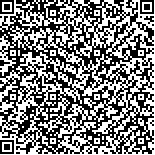|
|
|
| |
|
|
| 本文已被:浏览 833次 下载 776次 |

码上扫一扫! |
|
|
| 草鱼(Ctenopharyngodon idellus)出血病二价细胞灭活疫苗体液免疫效果及免疫保护率评价研究 |
|
郝贵杰1, 林锋1, 黄爱霞1, 叶霆2, 姚嘉赟1, 潘晓艺1, 袁雪梅1, 徐磊1, 胡金春2, 沈锦玉1
|
|
1.农业农村部淡水渔业健康养殖重点实验室 浙江省鱼类健康与营养重点实验室 浙江省淡水水产研究所 浙江湖州 313001;2.衢州市水产技术推广中心 浙江衢州 324000
|
|
| 摘要: |
| 草鱼出血病是由草鱼呼肠孤病毒(GCRV)引起的草鱼养殖业一种严重的病毒性出血病,给草鱼养殖产业造成重大损失。该病毒是一种双链分节段RNA病毒,根据GCRV多个病毒分离株基因序列分析及临床发病特点,共有三种基因型GCRV,其中基因Ⅰ型和Ⅱ型较为流行。通过细胞分离培养基因Ⅰ型(GCRV-ZV8909)和Ⅱ型(GCRV-HZ13) GCRV,研制出草鱼出血病二价细胞灭活疫苗,通过绝对定量的方法,测定基因Ⅰ型和Ⅱ型的病毒含量分别为2.0×109及1.5×106 copies/mL。用生理盐水将其分别进行50倍稀释和100倍稀释,包括原液及生理盐水对照共4组,分别腹腔注射免疫(20±5)g健康草鱼,剂量均为0.2mL/尾,每组40尾,各组于免疫后3、5、7、14、21、28、42、56、70、84 d分别取3尾采集血液制备血清。分别利用经原核表达并纯化制备两种基因型GCRV的VP7蛋白以及实验室保存的草鱼IgM单抗,建立了三抗体夹心酶联免疫方法(TAS-ELISA)分析评价疫苗体液免疫效果。结果表明,草鱼经腹腔注射不同剂量的细胞灭活疫苗后,与对照组相比,各免疫组血清抗体均有不同程度的提高,且原液组与50倍稀释组基本持平,但都高于100倍稀释组,各免疫组在免疫后5d即可检测到两种基因型GCRV抗体,且抗体水平持续到84d,但两种基因型抗体水平达到高峰的时间不一致,抗基因Ⅰ型GCRV抗体达到高峰是在28d,抗基因Ⅱ型GCRV抗体是在14d达到高峰。两种基因型抗体水平达到高峰时的血清效价分别为1︰800、1︰600。免疫保护率实验结果表明,原液组保护率最高,为67%,50倍稀释组为60%,100倍稀释组只有33%。 |
| 关键词: 草鱼呼肠孤病毒(GCRV) 三抗体夹心酶联免疫方法(TAS-ELISA) 体液免疫 免疫保护率 |
| DOI:10.11693/hyhz20220300082 |
| 分类号:S942;Q955;S965 |
| 基金项目:蓝色粮仓科技创新项目,2019YFD0900104号;浙江省公益技术研究农业项目,2016C32076号。 |
|
| EVALUATION OF HUMORAL IMMUNE EFFICACY AND PROTECTION RATE OF BIVALENT CELL INACTIVATED VACCINE AGAINST GRASS CARP HEMORRHAGIC DISEASE |
|
HAO Gui-Jie1, LIN Feng1, HUANG Ai-Xia1, YE Ting2, YAO Jia-Yun1, PAN Xiao-Yi1, YUAN Xue-Mei1, XU Lei1, HU Jin-Chun2, SHEN Jin-Yu1
|
|
1.Key Laboratory of Healthy Freshwater Fisheries Aquaculture, Ministry of Agriculture and Rural Affairs, Key Laboratory of Fish Health and Nutrition of Zhejiang Province, Zhejiang Institute of Freshwater Fisheries, Huzhou 313001, China;2.Quzhou Aquatic Technology Extension Center, Quzhou 324000, China
|
| Abstract: |
| Grass carp haemorrhagic disease is a serious threat to grass carp culture. The pathogen of gohemorrhage of grass carp is grass carp reovirus (GCRV), a double-stranded partitioned RNA virus. In terms of the gene sequence of GCRV isolates, there are three GCRV genotypes in clinical practice, among which genotypeⅠandⅡare more popular. Bivalent cell inactivated vaccine of grass carp hemorrhagic disease was developed by cell isolation and culture of typeⅠ(GCRV-ZV8909) and typeⅡ(GCRV-HZ13) GCRV. The contents of genotypesⅠandⅡwere measured to be 2.0×109 and 1.5×106 copies/mL, respectively, and four groups were set up in the experiment, including the original fluid, normal saline control, and 50- and 100-time normal saline dilution groups, 40 healthy individuals[(20±5) g] per group. They were intraperitoneally injected at dose of 0.2 mL/tail. Three blood samples were collected to prepare serum from each group on 3, 5, 7, 14, 21, 28, 42, 56, 70, and 84 d. The VP7 protein of GCRV were expressed in prokaryotic expression and then purified. The triple antibody sandwich enzyme-linked immunosorbent assay (TAS-ELISA) was established to evaluate the humoral immune effect of the vaccine combined grass carp IgM monoclonal antibody. Results show that the serum antibody of grass carp after being injected with different doses of cell-inactivated vaccine increased to different degrees compared to the control group. The original-fluid group was the same as the 50-time dilution group, but higher than 100-time dilution group. The two genotypes of GCRV antibodies could be detected out 5 d after immunization in each immune group, and the antibody level lasted until the 84 d. However, the peak time of the two genotypes of GCRV antibodies was not consistent. The peak time of the antibody against genotypeⅠGCRV was 28 d, and that of the antibody against genetypeⅡGCRV was 14 d. The serum titers of the antibody levels peaked at 1︰800 and 1︰600 for the two genotypes, respectively. The experiment on the immune protection shows that the original fluid group showed the highest protection rate of 67%, the 50-time dilution group was 60%, while the 100-time dilution group was 33% only. |
| Key words: grass carp reovirus (GCRV) triple antibody sandwich enzyme-linked immunoassay (TAS-ELISA) humoral immunity immune protection rate |
|
|
|
|
|
|
